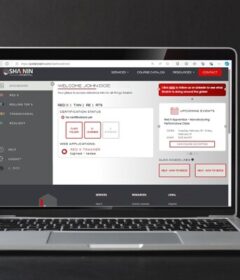From Awareness to Loyalty: Understanding the Journey of Nonprofit Supporters and How to Engage Them

As a nonprofit grows and gains new members, volunteers, and donors, you’ll start to recognize core differences in how different groups of people act and react to marketing materials. A devoted volunteer might take a much more favorable view of your campaigns than someone that hasn’t heard of your organization before, for example.
It is essential that nonprofits understand how to communicate with these different stages in order to better market to them. At its most basic, nonprofits need to master the rule of seven before moving on to later-stage customer relationships. In this article, we’ll guide nonprofits through the different stages of the customer journey, demonstrating exactly how they should engage their supporters throughout their ongoing familiarization.
What is the Nonprofit Customer Journey?
As a person becomes more familiar with your nonprofit, the extent to which they support, engage, and help market for your cause will shift. Of course, people that have only just stumbled across your nonprofit aren’t going to have the level of support and loyalty that a long-term donor has.
In order to create better marketing materials and communications, nonprofits need to know how to relate to donors across all levels of their customer journey. Typically, this journey is split into three core sections:
- Awareness
- Consideration and Donation
- Time Donation
Awareness
Marketing for nonprofits always starts with the awareness stage. This is the first point of contact between an organization and the potential donor. At this stage, they don’t have a stake in your nonprofit and are have only come across either a marketing post, a blog, or some other piece of content that you’ve put out into the world.
When marketing to people within the awareness stage, you should focus on showing the real-world positives that your nonprofit creates. Whether you use finished projects that you’ve terminated in the past or materials which demonstrate the good you’re delivering, these should be your front line of marketing.
The awareness stage is about increasing recognition and ensuring that people remember the good you’ve done when they see your name. You’re not asking for donations, nor are you trying to get these people to join your nonprofit. This stage, as its title suggests, is all about building awareness.
Consideration and Donation
During the consideration stage, people are familiar with your nonprofit and what good you do in the world. At this point, you can move into quantified marketing that shows what their donation would actively result in.
Using quantified statistics, you could demonstrate that their donation of $10 would have a certain real-world impact. Showing how they can be a part of the good that they encounter in the awareness stage will help urge people to donate to your nonprofit.
Donations are typically the first stage of involving members of a nonprofit. At this stage, the time and frequency of a recurring donation will dictate how you manage your connections going forward. As a person donates more of their money over a longer period to your cause, their natural relationship with you will build.
It’s important to show your gratitude over time, ensuring that those that move from consideration to donation feel valued for their contributions.
Time Donor (Volunteers)
The final stage, which is often overlooked within the world of nonprofit marketing, is the relationship between your organization and its most valuable assets – those that offer their time. The vast majority of nonprofits are able to continue running due to the hours of free labor that volunteers will offer.
Those that are willing to donate their own time are incredibly impactful to your organization. While donating money is one thing, these hourly shifts ensure the longevity of your nonprofit and help you scale toward new horizons.
When dealing with people that are volunteers, your marketing should be extremely personalized. You’re no longer dealing with a potential mass of new donors. Each one of these people has given up hours of their life to help achieve your vision.
Your marketing communications here should never focus on donations, and should be entirely grateful. Focus on the good that they’ve achieved, and how you are – together – building toward a better future.
Don’t underestimate the importance of volunteers in your nonprofit.
Why Is Shaping Communication so Important?
Communication does not have the same effect on every single person. On the contrary, each and every person will react differently to messaging they encounter. When it comes to the nonprofit industry, using the wrong communication style can be disastrous – impacting both new and established donors.
Changing the focus of your marketing campaigns to match the current stage that a customer is in allows for a much greater degree of personalization. Customer segmentation and personalization are the backbones of the marketing industry, with over 70% of all consumers expecting a high degree of personalized content.
Altering a nonprofit’s marketing materials will ensure that different groups react more positively to your communications:
- New Contacts – If you ask people in the awareness stage for donations, you’re instantly slamming the door on that person and making them feel uncomfortable. Understanding that your tone will shift over time will allow you to market appropriately to newer audiences.
- Established Donors – If you patronize established donors with materials aimed at new people, you’ll start to chip away at their loyalty. Personalize your voice to ensure that it’s more thankful, full of gratitude, and highlights how appreciative you are for all their help.
Understanding how to alter your marketing materials for these different stages will lead to a higher uptake with new clients and increased loyalty with older connections. Ultimately, this is a total win-win for your nonprofit.
Final Thoughts
For nonprofits to achieve success across the customer journey, they need to understand the unique perspectives, behaviors, and styles of communication that work for each archetypal supporter. By altering marketing tactics and tones across these three main stages, a nonprofit is able to engage its audience to a greater extent.
As they do this, nonprofits will rapidly find that their marketing materials stretch further, gain more interactions, and help streamline the development of customer relationships across the entire donor lifecycle.



